#Franz von Matsch
Text

William R. Dowoonah (Portrait of a Man), Franz von Matsch (1861-1942)
#art#art history#Franz von Matsch#portrait#portrait painting#poc in art#William R. Dowoonah#Ashanti#Ashanti people#Jugendstil#Austrian art#19th century art#oil on canvas#private collection
308 notes
·
View notes
Text

Das Dionysostheater in Athen (The Theater of Dionysus in Athens) by Franz von Matsch (1886)
202 notes
·
View notes
Text

Franz von Matsch - Two children with a bowl of cherries (n.d.)
70 notes
·
View notes
Text

Hilda and Franzi von Matsch, the Artist's Children (Franz von Matsch, 1901)
7 notes
·
View notes
Text
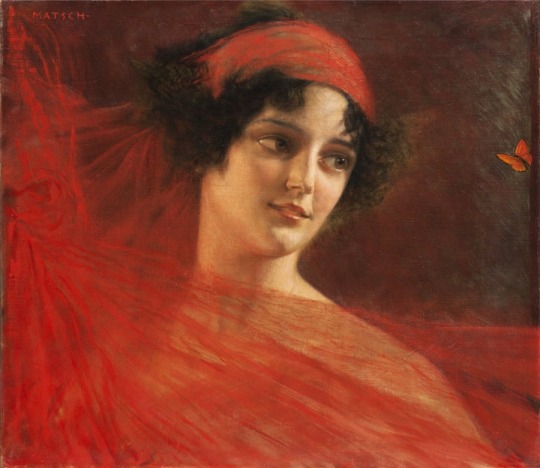
A Young Lady with a Butterfly
Franz Von Matsch
oil on canvas
27 notes
·
View notes
Text

Franz von Matsch (1861-1942) - Franziskus
29 notes
·
View notes
Text
Peles Castle
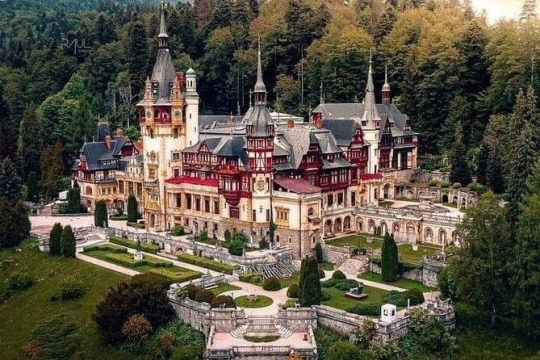
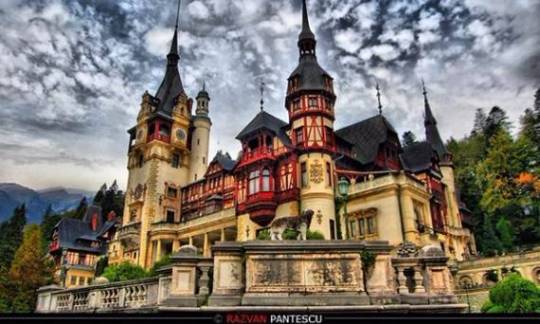





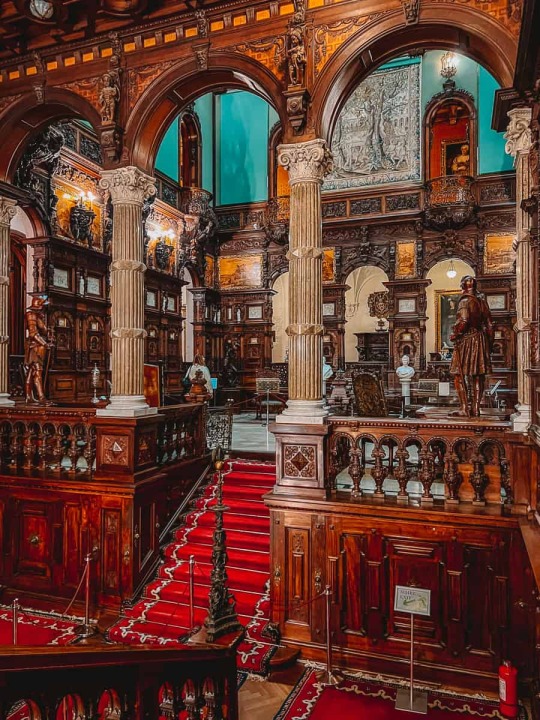





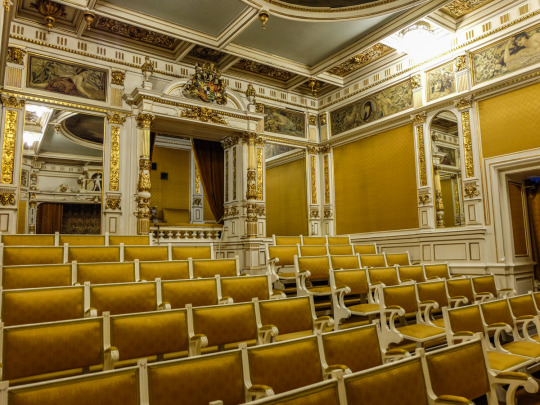
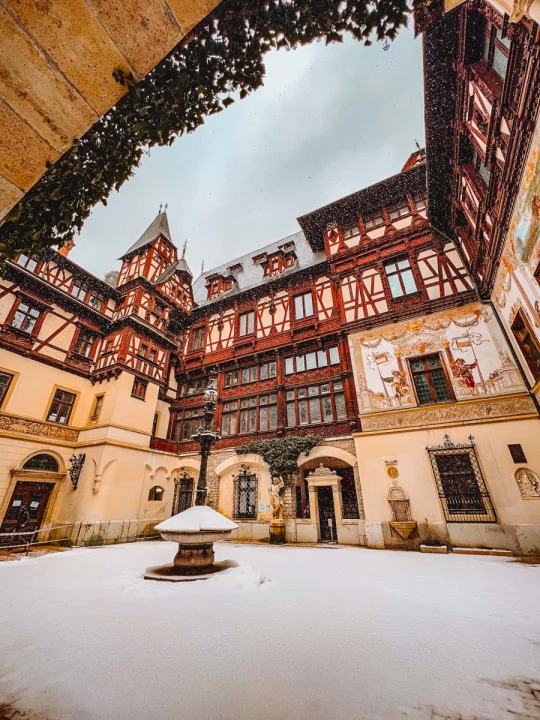

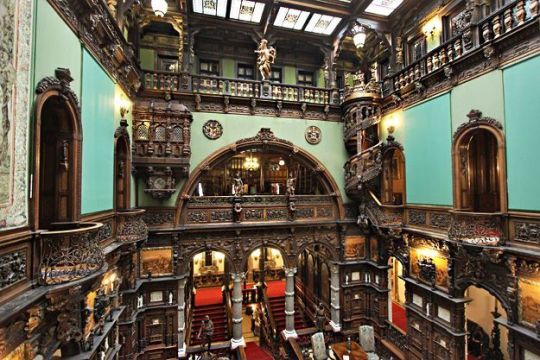
Peleș Castle is located at the foot of the Bucegi Mountains in the town of Sinaia in Prohova County, Romania. King Carol I of Romania built the Neo-Renaissance castle from 1873 to 1883; it was under his reign that the country gained its independence. Along with the castle, the king commissioned a royal summer retreat, a hunting lodge, royal stables, guards’ chambers, an Economat building, and a power plant on the estate. Peleș Castle was the world’s first to be fully powered by locally produced energy. The castle went through later additions throughout its history and was once seized by the Communist regime. The castle was closed from 1975 to 1990, but after the December 1989 Revolution the castle was re-established as a heritage site and reopened to the public. The castle boasts 160 ornate rooms carrying themes from cultures around the world. The rooms are lavishly decorated with wall and ceiling frescoes by Gustav Klimt and Franz von Matsch, Murano crystal chandeliers, German stained-glass windows, Cordoba leather covered walls, carved teak furniture in the Music room, and a 4,000 piece collection of arms and armor are displayed in the Armory. The castle also has a movie theater and a Turkish salon. The property has seven Italian neo-Renaissance terrace gardens made mostly of Carrara marble, while the gardens have statues, fountains, stairways, and marble paths. Peleș Creek runs through the courtyard, while a towering statue of King Carol I overlooks the main entrance. Peleș Castle is open to the public for guided tours and serves as the Peleș National Museum.
40 notes
·
View notes
Text
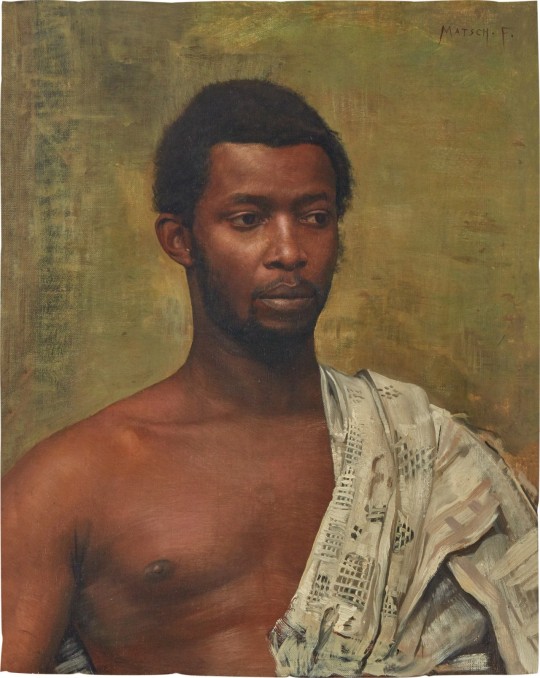
Retrato de um Homem , Franz Von Matsch ( 1861- 1942 )
18 notes
·
View notes
Text

The Triumph of Achilles by Franz von Matsch.
This giant painting is the central feature of the stairwell in the Achilleion Palace built by Empress Elisabeth of Austria on the island of Corfu. It depicts the triumphant Achilles dragging the dead body of Hector around the funerary mound of his beloved Patroclus whom Hector killed with the help of the god Phoebus Apollo. The inhumanity in regards to both the living and the dead is to me distasteful in the extreme. Of course, Homer's Iliad ends before Achilles meets his own foretold death. Such violence makes me think of the poor Ukrainian people. I say often that the actors, the sets, the costumes, and the technology may change. But, the roles remain the same repeating the same actions as before throughout history perhaps expecting a different result. That is the definition of insanity.
3 notes
·
View notes
Text
Gustav Klimt

Gustav Klimt · Jugendstil · Oskar Kokoschka und Egon Schiele
Das legendäre 'Wien um 1900' wird heute gern als die 'Klimt-Ära' bezeichnet. Das Dreigestirn am Wiener Kunsthimmel waren Gustav Klimt, Oskar Kokoschka und Egon Schiele.
Bereits als Akademiestudent künstlerisch erfolgreich, hatte Klimt schon vor der Jahrhundertwende allen akademischen Ballast abgeworfen und seinen epochalen persönlichen Stil entwickelt. Er war zum Idol des Wiener Kunstetablissements geworden.
Je mehr man sich mit Klimt befasst, desto bedeutungsvoller erscheint das Werk dieses unverwechselbaren Künstlers. Er war einzigartig sowohl als Maler als auch als Zeichner.
Während seine Gemälde intellektuell ausgewogen, sorgfältig geplant und mit größter Exaktheit ausgeführt sind, beeindrucken seine Zeichnungen durch ihr Unmittelbarkeit und Spontaneität. Sein Malstil gehört trotz aller Originalität eindeutig in die Kategorie des Jugendstils.
Gustav Klimt Vita:
Gustav Klimt wurde am 14. Juli 1862 in Baumgarten (Wien) als zweites von sieben Kindern geboren. Sein Vater, von Beruf Goldgraveur, und seine Mutter kamen aus bescheidenen Verhältnissen. Die Familie hatte oft große Mühe, mit den spärlichen Einkünften des Vaters auszukommen.
Über Klimts Kindheit ist nicht viel bekannt, außer das seine und die Begabung seiner Brüder Ernst und Georg frühzeitig erkannt wurde. Schon mit vierzehn Jahren gewann Gustav Klimt ein Stipendium für die Kunstgewerbeschule des Österreichischen Museums für Kunst und Industrie.
Ein Jahr darauf wurde Bruder Ernst in die gleiche Schule aufgenommen. Mit ihm und mit dem Studienkollegen Franz Matsch bildete Klimt schon während seiner frühen Studienzeit eine künstlerische Gruppe. Die drei wurden etwa beauftragt, bei der Ausführung von Fresken in der Haupthalle und im Treppenhaus des Kunsthistorischen Museums in Wien mitzuarbeiten.
Kurz nach Abschluss des Studiums erhielt das Trio weitere Aufträge, u.a. für die städtischen Theater in Fiume, Karlsbad und anderen Städten der Donaumonarchie. Wichtigster Auftrag wurde 1886 die Hauptaufgänge im Wiener Burgtheater mit Malereien auszustatten. Dieses Werk brachte Klimt schon in jungen Jahren die höchste Anerkennung des Kaisers Franz Joseph und das Goldene Verdienstkreuz ein.
Am 11. Januar 1918 erlitt er völlig unerwartet einen Schlaganfall und starb am 6. Februar des gleichen Jahres.
Gustav Klimt · Jugendstil · Oskar Kokoschka und Egon Schiele · Kunst
Read the full article
1 note
·
View note
Text
The Ringstrasse is a 5.3-kilometer circular boulevard that wraps around Vienna's historic city center. On the boulevard, there are many places such as the most magnificent structures of the city, interesting buildings and must-see museums and restaurants. The most important buildings of Vienna, one of the capitals of culture and art, are located on the street. Ringstrasse, one of the most beautiful streets in Europe in terms of history, architecture and aesthetics, is at the top of tourists' travel lists.
The Vienna State Opera is one of the most important buildings on the boulevard. It has an important place in both Austrian history and world history. The opera house, which has been in service since 1869, reflects the Neo-Renaissance period. It was closed with the destruction caused by the Second World War, but reopened in 1955.
Neue Burg is a palace that houses the National Library and the Weltmuseum. The palace, whose construction was completed in 1913, is located opposite Heldenplatz Square.
The Kunsthistorisches Museum is one of the most popular museums in the world. The museum, which has been in service since 1891, hosts important works such as the most important art treasures of the Habsburgs and the largest Brueghel collection in the world.
The National History Museum is very important as it hosts the largest natural science collection in the world.
The Parliament Building is among the most important architectural structures of the boulevard and Vienna. Reflecting the features of Greek architecture, the building was built between 1874 and 1883 by Theophil von Hansen. The fountain named Pallas Athene is also very interesting.
Vienna City Hall is one of the must-see structures of the city with its Neo-Gothic architectural design. During the year, many events are organized in the square where the building is located.
The National Theatre, built between 1874 and 1888, the ceiling of the theater was created by Gustav Klimt, Franz Matsch and Ernst Klimt. The theater stage hosts the best actors of the world throughout the year.
Ringstrasse is a street that has remained quite green besides being home to many important buildings. When people come here, they not only visit art venues, but also find the opportunity to rest as much as they want in green areas. Along the street, 2400 trees, from sycamore to linden trees, invite nature lovers to rest in their shade.
0 notes
Text
The Ringstrasse is a 5.3-kilometer circular boulevard that wraps around Vienna's historic city center. On the boulevard, there are many places such as the most magnificent structures of the city, interesting buildings and must-see museums and restaurants. The most important buildings of Vienna, one of the capitals of culture and art, are located on the street. Ringstrasse, one of the most beautiful streets in Europe in terms of history, architecture and aesthetics, is at the top of tourists' travel lists.
The Vienna State Opera is one of the most important buildings on the boulevard. It has an important place in both Austrian history and world history. The opera house, which has been in service since 1869, reflects the Neo-Renaissance period. It was closed with the destruction caused by the Second World War, but reopened in 1955.
Neue Burg is a palace that houses the National Library and the Weltmuseum. The palace, whose construction was completed in 1913, is located opposite Heldenplatz Square.
The Kunsthistorisches Museum is one of the most popular museums in the world. The museum, which has been in service since 1891, hosts important works such as the most important art treasures of the Habsburgs and the largest Brueghel collection in the world.
The National History Museum is very important as it hosts the largest natural science collection in the world.
The Parliament Building is among the most important architectural structures of the boulevard and Vienna. Reflecting the features of Greek architecture, the building was built between 1874 and 1883 by Theophil von Hansen. The fountain named Pallas Athene is also very interesting.
Vienna City Hall is one of the must-see structures of the city with its Neo-Gothic architectural design. During the year, many events are organized in the square where the building is located.
The National Theatre, built between 1874 and 1888, the ceiling of the theater was created by Gustav Klimt, Franz Matsch and Ernst Klimt. The theater stage hosts the best actors of the world throughout the year.
Ringstrasse is a street that has remained quite green besides being home to many important buildings. When people come here, they not only visit art venues, but also find the opportunity to rest as much as they want in green areas. Along the street, 2400 trees, from sycamore to linden trees, invite nature lovers to rest in their shade.
0 notes
Text

Franz von Matsch - Two children with a bowl of cherries (n.d.)
38 notes
·
View notes
Text

Franz von Matsch - "Gladiator with lion"
.
Oil on canvas 77 x 77 cm (without frame). Private collection, Austria #FranzvonMatsch (1861 – Vienna – 1942) #gladiator #lion Source www.beletage.com/en/objects/gemaelde-grafiken/41-paintings/335-gladiator-with-lion Thanks Peter Lione
.
0 notes
Photo
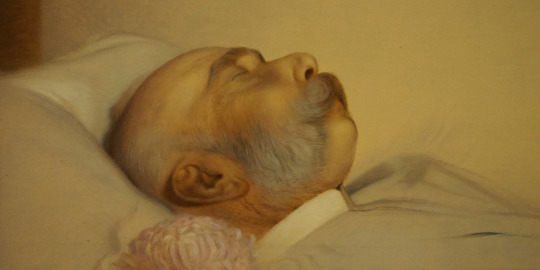
Franz von MATSCH (1861-1942) “Kaiser Franz Joseph I. auf dem Sterbebett"- “Emperor Francis Joseph I on His Deathbed" (1916) -
on view at the Belvedere Museum Vienna.
#franz von matsch#franz matsch#belvedere vienna#vienna 1900#wien 1900#jugenstil#gustav klimt#ernst klimt#künstler-compagnie
4 notes
·
View notes
